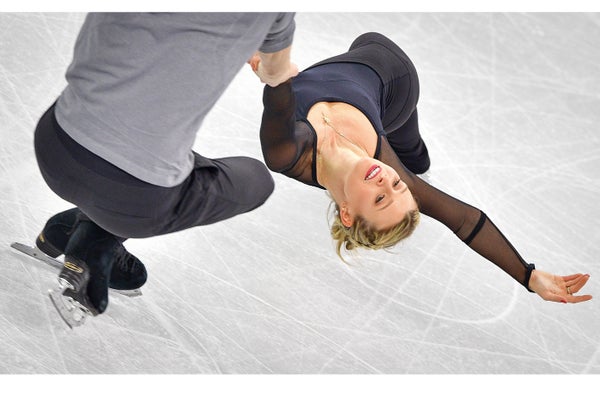Watching a fellow human jump into the air, spin three times and land on a thin piece of steel—all the while balancing on slippery ice—is an awe-inspiring experience.
Figure skaters execute their routines so elegantly, they make it look easy—an illusion that quickly dissolves with our own trepid first step in an ice rink. Clinging to the side walls for dear life, feet stinging from the awkward display of ice walking, first-time ice skaters can barely skate in a straight line, let alone balance on one foot. Although it may seem Olympic figure skaters have befriended the ice gods and coaxed the laws of physics to work in their favor, what they have really done is rewire their brains to suppress their reflexes.
If one tilts one’s head backward far enough, the body’s reflexes will kick in. Neurons that are responsible for firing when the brain senses the body is off-balance will set off a cascade of signals from the inner ear to the brain stem, then to the spinal cord and finally to the muscles that tell the body to lurch forward for the save. In sports like figure skating, the body is frequently in such unlikely positions. So how do skaters convince their brains that it’s totally okay the body is halfway to a face-plant?
On supporting science journalism
If you're enjoying this article, consider supporting our award-winning journalism by subscribing. By purchasing a subscription you are helping to ensure the future of impactful stories about the discoveries and ideas shaping our world today.
According to researchers, practice can lead to new maps of neurons in the cerebellum, an area in the back of the brain. So when the skater moves into a position anticipated by the cerebellum, it fires neurons to cancel out reflex signals that would interfere with the desired movement. If someone is slipping on ice and someone else is deliberately jumping, “they might be moving through the world in exactly the same way,” says Kathleen Cullen, a neuroscientist at John Hopkins University who in 2015 showed this brain mechanism in an experiment with monkeys. In one case, you want your reflexes to work; in the other, you don’t. The brain learns to quell reflexes when there’s a match between what it expects and what actually happens, she says.
Skaters are also masters at avoiding dizziness. Here again, their brains have learned to subdue a reflex—this time in the eyes. As we move about the world, our eyes automatically move to compensate for slight head movements so we can stare at the same point in space. Normally, if we spin around in an office chair and suddenly stop, we feel like we’re still moving. That’s because fluid in the inner ear responsible for detecting movement continues to whirl around due to inertia, making your brain think it’s still in motion. Because your eyes continue moving to correct your view, you feel dizzy. According to Cullen, what a skater’s brain learns to do—through a similar mechanism in the cerebellum—is to ignore the false sense of motion at the end of a spin and greatly reduce that eye reflex.
Training the brain takes time, and that’s why “it’s only practice that makes perfect,” says Rui Costa, a neuroscientist at Columbia University’s Zuckerman Institute who also studies the neuroscience of movement. When you look at how seamless most of these routines are, he says, “I mean, it’s just amazing.” For proof that the brain is continuously working and calibrating itself to help the body adapt to new motions and environments, just step out of the rink after some time skating. The ground will feel weird, as if your brain expects it to be made of ice.
